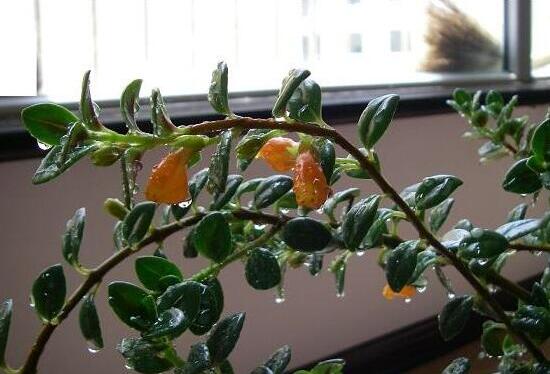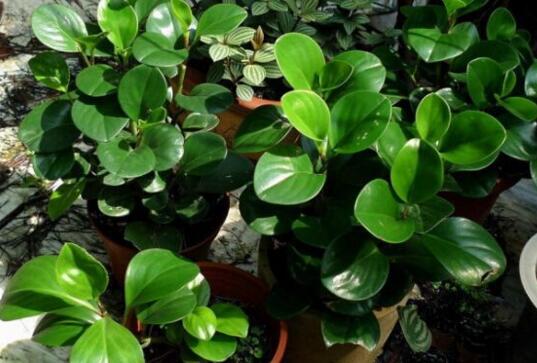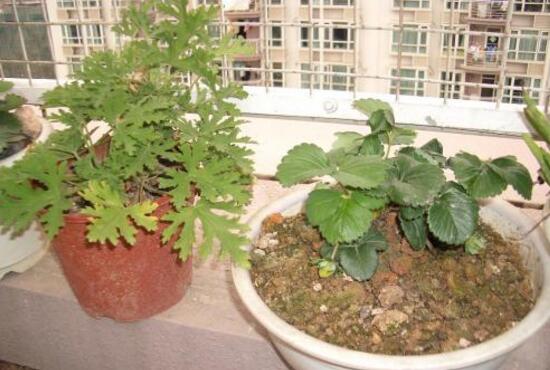How to propagate goldfish Cymbidium, the propagation method / cutting propagation has a high survival rate.
Goldfish hanging orchid, a common indoor potted plant, has green leaves and strange flowers, just like a wandering little goldfish. It looks very beautiful. Such a beautiful plant, there are naturally many people who raise it, so goldfish orchids are multiplied in large numbers, so how to reproduce goldfish orchids? Because cutting is the most suitable breeding method for goldfish orchid, so the following editor will introduce the cutting method of goldfish orchid in detail.
1. How to propagate, cuttage / sow / ramet of goldfish

If you are a novice, then master the goldfish orchid culture method on it; but if you are an old hand, or want to become an old hand, then you also need to understand the goldfish orchid breeding method, so that you can fundamentally understand the goldfish orchid.
As for how to reproduce goldfish Cymbidium, generally speaking, cuttage propagation, sowing reproduction and plant propagation can be used. Because the seeds of goldfish Cymbidium are difficult to obtain and the ramet is not easy to survive, it is rare to use the method of sowing and ramet to propagate, and the method of cutting is commonly used to propagate.
2. Cutting propagation methods of goldfish Cymbidium.
1. Cutting time
According to the growth habits of goldfish Cymbidium, its cutting propagation time can be carried out throughout the year. It is best to wait for the goldfish to hang orchid after the flowering period, carried out indoors.
2. Cuttings selection
In the cutting method of goldfish orchid, the selection of cuttings is very important. If it is selected, more than half of the whole breeding process will be successful. For goldfish orchid cuttings, one-year-old healthy branches should be selected and the length of 10-15 cm should be cut as cuttings. Note: the cuttings should retain 4 leaves of 3mi and remove the basal pairs of leaflets.
3. Cutting substrate
For the choice of cutting substrate, we can use clean river sand or soil made of vermiculite.
4. Cuttings start
As the above preparatory work, the cutting propagation of goldfish orchid will officially begin. The part with small leaves in the west of the cuttings is inserted into the prepared substrate. After cutting, the soil needs to have a relatively high degree of wettability.
5. Maintenance after insertion
After the cuttage is finished, it is generally necessary to cover the cuttings with a film and adjust the room temperature to about 20 ℃. In addition, it is also necessary to ensure a high degree of wetness of the air. Generally, it will take root in 3-4 weeks, and management needs to be strengthened after taking root.
After the cuttings survive for 2 months, they will be able to pick the heart, so that they can have more branches and open more, so that the overall shape will be more beautiful. As for how to pick the heart of goldfish hanging orchid, there is a detailed introduction in front, so I won't say much here. It can be transplanted into the pot in a month or two. Usually the seedlings in the first year will not blossom, but the goldfish orchid will blossom after two or three years.
Generally speaking, breeding goldfish hanging orchid, the most suitable for the majority of flower friends is cutting, flower friends who want to breed with their own hands must learn. With regard to the breeding method of cactus, the editor has introduced this, hoping to give you some help.
How to raise goldfish orchids in winter
Cold weather in winter is often a test of biological survival, winter is not only more uncomfortable people need to wear thick clothes, in fact, plants are also more uncomfortable. Goldfish orchids are plants that need special maintenance during the winter, so if they are raised in winter, goldfish orchids will grow better next year.
How to raise goldfish and orchids in winter
1. Soil requirements in winter
The arrangement of the soil is, it is best to provide it with good drainage, good permeability, but also slightly acidic soil.
Second, temperature arrangement
Because this plant likes high temperature and high humidity, because of the cold weather in winter, and it has entered a dormant period, it needs to control the temperature of its growing environment at about 15 ℃. If the temperature is lower than 10 ℃, its leaves will begin to turn yellow and dry, and it will easily fall.
Third, lighting
This plant likes negative places and cannot accept direct sunlight, but it can be placed in a negative place with astigmatism and ventilation, and a dry and cool place can be arranged for it during the winter dormancy period. this can promote the differentiation of its flower buds, but if it is properly given more light before it blossoms in winter, its flowering quality will be relatively improved.
4. Moisture control
The growth of this plant itself requires a lot of water, but there is a short dormant period in winter, so you can water it less, as long as you keep the soil in the basin a little dry, and wait until the winter flowering period. at this time, it needs to supply it with the water it needs, and the soil in the basin should maintain humidity accordingly, and be sure to increase the humidity of the air.
Culture method of goldfish Cymbidium
1. Pot soil selection of goldfish orchid.
Goldfish orchid is suitable for planting in greenhouse, planting multi-purpose substrate with good drainage and ventilation to the root system. In order to prevent water leakage, you can use round, beautiful flowerpots to plant, cover the bottom of the basin with coarse grains and stones, and then add a small amount of mixed culture soil.
2. The planting method of goldfish orchid.
In order to improve the survival rate, we must pay attention to the position of flower branches when planting, which can enhance the ornamental value of goldfish orchid.
Select the fresh branches with full root system, plant them evenly in the cultivated soil, and fill the basin soil before they can be planted. Suitable fertilizer can be added to the potted soil, and when the branches grow, they will hang down around the flowerpot.
When potted flowers are in full bloom, each plant will grow more than a dozen goldfish flowers. When the new branch grows, it can pick the heart, which can make the plant type symmetrical and grow more beautifully.
3. Fertilizer and water demand of goldfish hanging orchid
Magnolia has a high demand for moisture and needs to be properly watered in spring, summer and autumn, and the surrounding area needs to be drenched regularly to maintain humidity. In the hot summer season, it is best to put the flowerpot in a shallow dish filled with water. These measures can avoid falling leaves due to dry air. Goldfish flowers should also be watered properly before blooming in winter and spring, so that the flowers can bloom fully and brightly.
During the growth period, the goldfish orchid can grow vigorously by applying thin organic fertilizer every 1-2 weeks, and the application of phosphate fertilizer before flowering can make it more pregnant buds and blossom and enhance its ornamental effect; do not apply fertilizer during flowering, pruning and shaping should be carried out after blooming, and more nitrogenous fertilizer should be applied.
4. Lighting and ventilation of goldfish orchid
Goldfish hanging orchid in addition to winter should have more sunlight, other seasons should be more shade, spring, summer and autumn should cover the sun 60% to 70%, or hanging in the outdoor shade shed, or tree shade, cool, ventilated place, receive more scattered light but no direct sunlight.
Such an environment is very suitable for its growth. Goldfish hanging orchid in winter before flowering, should appropriately enhance the light, so as to make its flowers colorful.
5. The breeding method of goldfish orchid.
Goldfish orchids are propagated by cutting. In spring and autumn, the length of branches is about 10 cm, and 3 to 4 nodes are cut as cuttings, which are inserted in a bed with coarse sand as substrate to maintain high humidity and temperature of about 20 ℃, which is easy to take root and survive.
Can goldfish orchids be cultured in water?
Flower friends who like hydroponic plants, do you want hydroponic culture for everything you see? Can a small pot of goldfish hanging orchids be hydroponically cultivated on weekdays? Do you really want to try it? In the eyes of many flower friends, as long as the branches can be inserted in the water, they can be hydroponically cultivated, and the goldfish orchid is among them. It turns out that goldfish orchids can also be hydroponically cultivated!
Can goldfish orchids be put in the bedroom?
Goldfish orchid is a kind of green plant that can enjoy both leaves and flowers. the orange flowers are bright and warm, and the shape is strange, and the number of flowers can be as many as a hundred in the full bloom. Under the breeze, the goldfish seen from afar seems to be swimming leisurely and freely in the green. It is very interesting and has high ornamental value. It is very suitable for indoor breeding. It can beautify the room, please the body and mind, purify and absorb the pollutants and dirty gases in the surrounding air, purify and increase humidity, raise a pot and put it at home, it can be said to kill two birds with one stone.
Winter is the season for goldfish orchid flowering. Proper maintenance of goldfish orchid in winter can not only help goldfish orchid survive well, but also help goldfish orchid prolong its florescence, which is a matter of killing two birds with one stone. Other normal maintenance methods of goldfish orchid are necessary for the growth of goldfish orchid.
What are the breeding methods and matters needing attention of duck palm wood?
? Related recommendations:
? How to raise hanging orchids? How to raise water lilies
? How to raise carnations? Desert rose culture
? Interior decoration, this article comes from [Decoration Information]
The duck palm wood is evergreen all the year round, the leaves are broad and soft, the branches are dense, the branches and leaves are cascading, the emerald green is rich, the plant posture is plump and elegant, and has a good sense of layering, the important thing is that it has strong shade tolerance, its wood is soft, it is commonly used to make matchsticks and steamers, its leaves and root bark can be used as medicine in the folk, used to treat influenza and fall injuries, and its breeding methods are not strict. The following is the editor's share: breeding method 1, soil: the cultivation soil of duck palm wood can be cultivated directly by using peat soil or rotten leaf soil plus a little basic chemical fertilizer or sandy soil. This ensures the permeability and drainage of the soil. Temperature: the most suitable temperature for the growth of duck foot wood is 15-25 degrees Celsius. Once the temperature is lower than 5 degrees Celsius, there will be the phenomenon of leaf loss, usually also need to pay attention to ventilation. 3, lighting: duck foot wood is a semi-shade plant, shade-tolerant, remember not to be placed in direct sunlight, as long as the potted plant is placed on the balcony or indoor light.
4. Watering: the basin soil should be kept moist. It should not be watered too much except in other seasons in winter. Watering should be done every three or four days. Watering in winter should be reduced appropriately, and the water temperature had better be similar to that of the soil. 5. Fertilization: fertilizing the basin soil every month in spring, summer and autumn, the fertilizer ratio is: nitrogen: phosphorus: potassium = 2:1:1 compound fertilizer. 6. Diseases and insect pests: the diseases of duck palm wood are mainly leaf spot and anthracnose, which can be sprayed with antimicrobial agents, and the pests are mainly shell insects, which can be sprayed with omethoate EC. Matters needing attention
1. The juice of duck palm wood is poisonous, but we don't have to "talk about poison discoloration". Its poison is mild. If you touch it, you can wash it off with water. Even if you eat it by mistake, it will not endanger life. 2. Duck palm wood can not be directly exposed to the hot sun. It should be placed in a semi-overcast environment. It is usually enough to shine for four hours a day. 3. Pay attention to the degree of watering too dry will make the duck foot leaves, if the weather is too dry, spray water to the plant, and rainy season to prevent the occurrence of stagnant water. 4. if you want to cut a plant, you can't change the pot in a hurry, wait until the plant grows well and stably, and then change the pot, you can mention the survival rate of the plant. 5. Duck palm wood is very sensitive to ethylene and should not be mixed with ethylene-producing plants or other items, otherwise the leaves will fall.
Conclusion: in our home decoration, home green plants are indispensable and play a very important role in a home. It can not only add green to the home and make the home look more vibrant. Of course, it can also help us to purify the indoor air. Isn't it a household decoration that can kill more than one stone? This is the end of the introduction of the breeding methods and matters needing attention of duck palm wood. I hope it will be helpful to everyone.
[related recommendations]
? How to raise flamingos? How to grow lilies? How to raise lucky bamboos? The breeding method of Jasper? Culture method of Hydrangea
? How to raise Anthurium andraeanum? How to raise goldfish grass? How to keep touch incense? Longevity flower culture method? The culture method of night incense
- Prev

How to propagate Douban Green, the method of propagation / cutting or ramet can be used.
Although Douban green is a herb, but it also has some characteristics of succulent plants, its reproduction is relatively simple, but in the way of reproduction will be more special, such as leaf insertion is one of them, then how does Douban green reproduce? Let's take a look at the breeding method of Douban green.
- Next

Mosquito repellent how to reproduce, mosquito repellent breeding method diagram / cutting sowing, choose one of the two
The efficacy of mosquito repellent grass, you can know from the name, it can drive mosquitoes, and its green leaves, but also has a good ornamental effect. Such plants naturally cause countless people to go to potted plants, so it is imperative to propagate a large number of mosquito repellent grass, then how to reproduce mosquito repellent grass? The following is a diagram of the breeding methods of mosquito repellent grass.
Related
- Fuxing push coffee new agricultural production and marketing class: lack of small-scale processing plants
- Jujube rice field leisure farm deep ploughing Yilan for five years to create a space for organic food and play
- Nongyu Farm-A trial of organic papaya for brave women with advanced technology
- Four points for attention in the prevention and control of diseases and insect pests of edible fungi
- How to add nutrient solution to Edible Fungi
- Is there any good way to control edible fungus mites?
- Open Inoculation Technology of Edible Fungi
- Is there any clever way to use fertilizer for edible fungus in winter?
- What agents are used to kill the pathogens of edible fungi in the mushroom shed?
- Rapid drying of Edible Fungi

